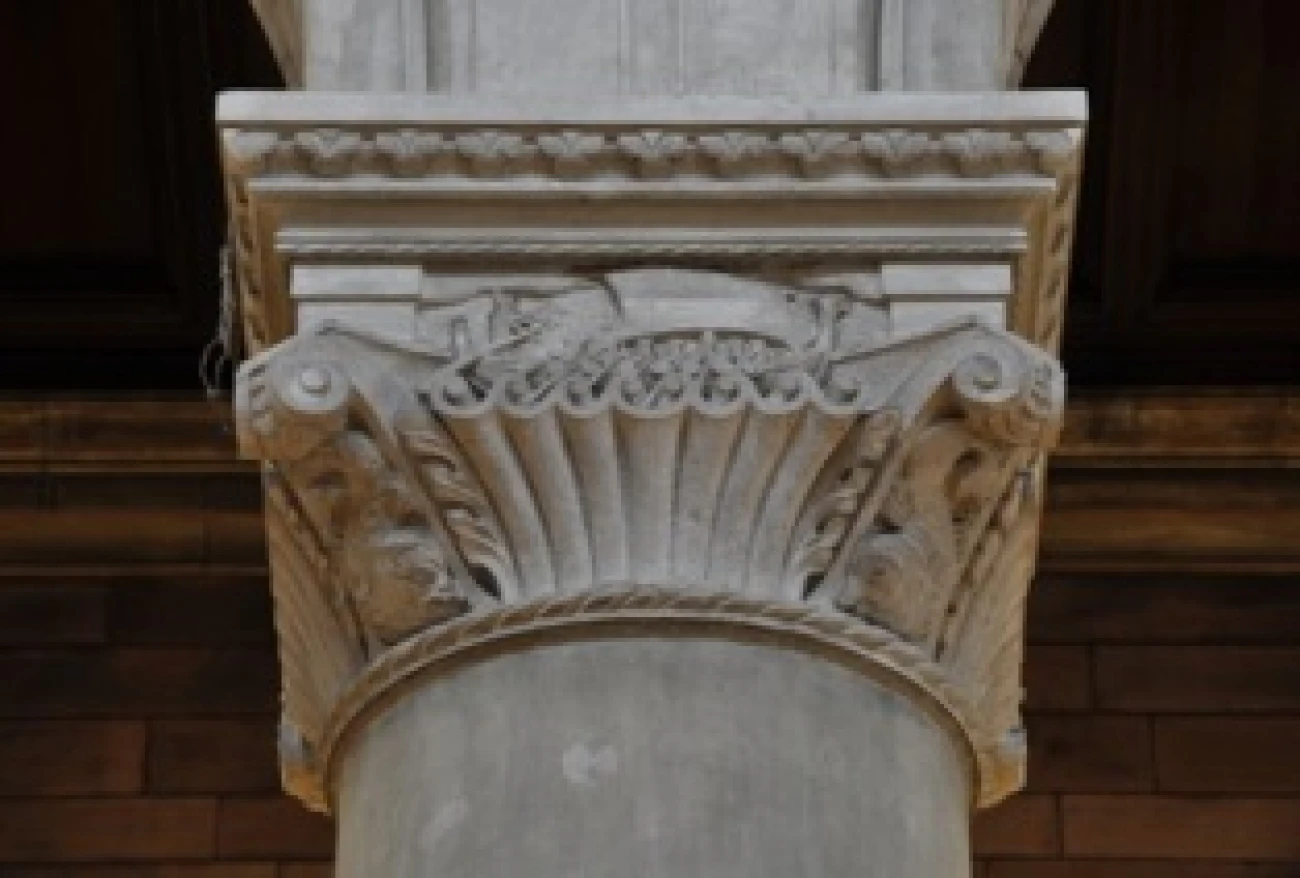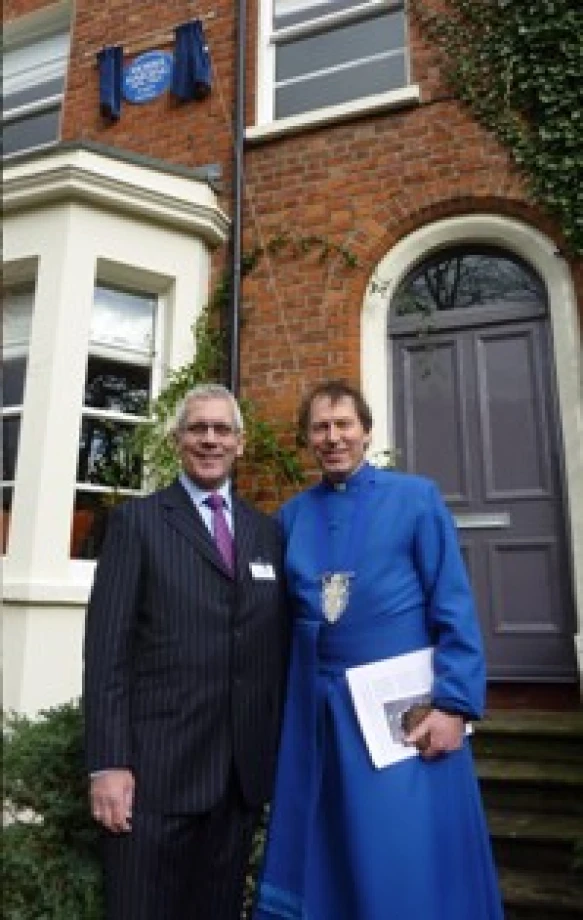Sculptor honoured with Blue Plaque
The Ulster History Circle and North Down Borough Council has unveiled a new Blue Plaque in Holywood in commemoration of George Frederick Morris Harding (1874 – 1964): Sculptor.
At the unveiling on Friday 24 February at 104 Church Road, Holywood, The Dean of Belfast Cathedral, The Very Revd John Mann, spoke of the contribution Morris had made to the visual impact of art in worship and sacred space.
As a tried and tested craftsman, Harding was invited in 1925, at the age of 51, to work on Nicholson’s designs for many of the capitals and corbels in the nave of St. Anne’s. Along with other carvings and the bronze soldier on top of the memorial lectern to the fallen of the 36th (Ulster) Division, this body of work became the major undertaking of his career.
“The carved stonework in the nave of St Anne’s Cathedral is both spectacular and fascinating; spectacular because of its complexity and variety, fascinating because of its relationships – both to the City of Belfast and to the Church and Christianity,” said Dean Mann.
“Morris Harding spent many years as sculptor of the capitals and corbels of the nave pillars. He was over 50 years of age before he began this magnificent work and it is thought that for more than 12 years he was chipping away, high up above the floor of the cathedral.”
That work in the nave includes carvings of the philosopher Bishop George Berkeley, Bishop Jeremy Taylor author of the spiritual classic “Holy Living and Holy Dying”, and Mrs Cecil Frances Alexander who wrote the hymns, “There is a green hill far away” and “All things bright and beautiful”. Ship–building, the linen industry, agriculture and science and the arts are also represented.
Dean Mann went on to express his thanks to Morris Harding, “for the gift that he has given to us – for his contribution to the Cathedral’s grandeur, that lifts our hearts and souls to God.”
Read the full text here.
Morris Harding

Morris Harding was born in Stevenage, Hertfordshire on 29th April 1874. His early education was at the local grammar school, eventually going up to Cambridge University but leaving prematurely to join the merchant navy for a time, satisfying his innate longing for the sea. He subsequently trained as a painter and sculptor in the studio of his uncle, Harry Bates, A.R.A. who was a leading figure in the nineteenth century New Sculpture movement. Harding also worked under J.M.Swan, R.A., teaching sculpture and life drawing at the London County Council Technical Institute. He was also a member of the Royal Society of British Sculptors and the Society of Animal Painters with examples of his work being exhibited at the Royal Academy in London and the Glasgow Institute. He was most active in the arts community from about 1912 until 1958.
Whilst working in London, one of Morris Harding’s first major commissions in 1914 was a series of relief panels for Mappin Terrace in London Zoo, depicting polar bears, a subject to which he returned on a number of occasions. Dr. Joseph McBrinn (University of Ulster), states that, ‘…it is in the depiction of animals in the round or in relief on which Harding’s reputation is often judged.’
Harding also worked on a number of important war memorials on which animals featured and he was commissioned to execute a major work for the Memorial Chapel at Rugby School in 1922. The eminent architect of this project was Sir Charles Nicholson who also became consultant to the Cathedral Church of St. Anne, Belfast at a crucial stage in its construction.
Morris’ commission in the Cathedral was to occupy his creative talents for much of the next 23 years. Indeed, it could be said that his contribution to the ornamentation of St. Anne’s represented, for him, a labour of love. A former parishioner recounted how, during the Blitz, Morris volunteered to keep overnight fire watch in the Cathedral when the city was under threat of incendiary attack.
Other commissions in Northern Ireland followed; the font in St. Peter’s Church, Antrim Road, the Royal Arms on Telephone House, Cromac Street, Belfast and those on Government House, Hillsborough. He also carved the tomb of the 7th Marquess of Londonderry in the grounds of Mountstewart. Harding shared Rosamond Praeger’s Studio in Holywood for a time, carving the base for her landmark sculpture,
‘Johnny the Jig’. He eventually chose to settle in Holywood where he had his own studio in Church Road. He became President of the Royal Ulster Academy in 1947, was awarded the O.B.E. in 1950, followed by an honorary Master of Arts degree from Queen’s University in 1958. He died at his home on 15th January 1964 in his 90th year.
His considerable contribution to the built heritage of the United Kingdom has been largely forgotten today and sadly, his remains lie in an unmarked grave in Holywood’s New Cemetery. It is indeed timely therefore, that a blue plaque at his former home should now celebrate his life and work for all to see.
Biography by Alan Boyd from The Dictionary of Ulster Biography website.
